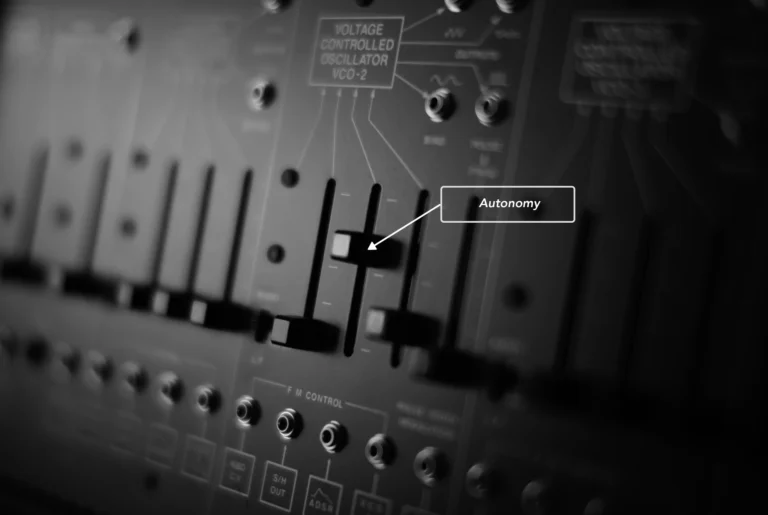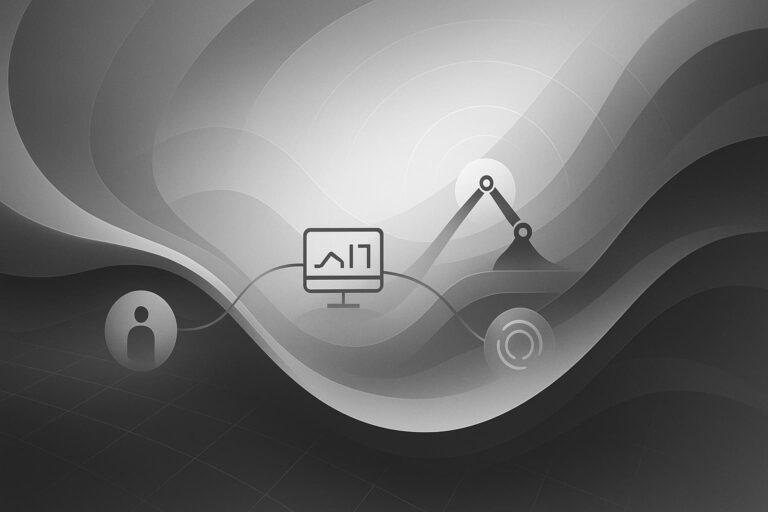An excerpt from “Robotics And The Modern Warehouse“, a guide exploring how robotics-as-a-service is revolutionizing warehouses.
While no two RaaS warehouse offerings are identical, there are some common traits everyone should strive for in creating a successful solution. In this excerpt, you’ll learn every aspect to consider when developing a robotic solution for warehouse and logistics.
Adaptability
For starters, adaptability is key across multiple dimensions. First and foremost, RaaS solutions must integrate themselves into the existing warehouse layout and workflow to be functional, however, warehouses frequently modify things as they themselves adapt to different market conditions, supply chain issues, and seasonality. RaaS solutions can’t be so brittle that it breaks whenever a warehouse rearranges item locations, adds or removes fixed architectural elements, or introduces other new technologies.
For the customers, these adjustments must appear seamless by using updated data coming from the warehouse management systems or by remapping the entire layout itself using onboard sensors and cloud-based AI. If the robots can’t keep up, workers will quickly abandon them because they have their own quotas and deadlines to hit.
Beyond that, customers may identify new tasks where they want to incorporate robotic automation. Accommodating those wishes quickly and with little effort from the customer by using the existing hardware and software creates a stronger partnership and builds customer loyalty.
Rich data and analysis
Anecdotal evidence and worker testimonials aren’t enough proof to convince warehouses to commit to massive, lengthy deployments. They need hard data that unequivocally demonstrates the benefits a RaaS solution provides. This is a collaborative effort between the RaaS firm and the customer, as both sides have key data points to contribute to this analysis. Establishing the required data for proper ROI measurement upfront and creating a steady cadence for those exchanges can help ensure the RaaS company can deliver updated metrics and dashboards regularly.
But whenever possible, RaaS firms should leverage their own data and what they can glean from the warehouse management system so they’re not overly reliant on inputs from customers who may be distracted or unmotivated to help out in this arena.
Workforce engagement
RaaS deployments are unlikely to generate massive benefits for the customer without worker cooperation and participation, so it’s important to make them allies versus enemies. While they may have some understandable worries that these robots are coming for their jobs, that’s usually easily dispelled with a little explanation and hands-on training and interaction.
The value proposition for most RaaS engagement remains centered on warehouses being more productive with their current staffing levels, so you can hopefully placate the workforce by explaining that the robots are there to help them versus replace them. However, showing is likely much more powerful than telling in this case.
RobustAI makes onboarding workers all about giving them agency and demonstrating how the robots are there to help them.
“For floor associates, we generally get some version of ‘this is really different’,” said Jules. “The ability to touch and interact with a robot is empowering and it’s about supporting me and not taking my job. We’re incredibly sensitive to that dynamic because that’s how we learn. That’s how we win.”
RobustAI’s solution involves workers interacting directly with the robots. The workers can use them as power-assisted carts that “follow” them around, as well as teach them about important locations. The robots can also help train the workers, walking them through different functions on the robots’ screens. In situations where organized labor represents some or all of the workforce, RaaS companies may need to spend a little extra time on alleviating concerns.
“Unions are usually initially suspicious,” Showalter said. “You need to do a little education, but once they know you’re not taking their jobs they’re good with it. Workers love them because it reduces their physical labor (walking). They become the “cool parent” because they work with robots.”
A RaaS deployment can also offer career advancement opportunities for some staff that interacts with the robots more often, as they can move from being a regular warehouse worker to a “robotics specialist.”
Chandra hasn’t found unions to be a challenge in India, either.
“No pushback from workers or unions,” Chandra added. “People are usually enthusiastic about tech and working alongside robots. There’s always something better that people can do in that factory and skilled labor is in short supply. The pushback comes from people who just don’t like change in general.”
Supporting the rollout
Most RaaS deployments go much better with—if not outright require—a local staff presence initially. There are many variables, but it’s not unusual to spend anywhere from three days to nearly a month on-site to get things up and running.
This time is spent both training the staff as well as the robots while working out any kinks in the solution now that it’s out in the wild. Ideally, adding additional robots to a site can all be managed remotely, but this may also require limited on-site support. Since flying staff out to different locations and paying for their travel expenses gets costly, most RaaS firms utilize third-party agents once they begin to scale and expand their geographic footprint.
“The earlier you have an agent the sooner you don’t have to send people all over the country and have people living out there on standby,” Showalter said. “You need techs in driving distance for same-day repairs.”
Fetch Robotics, for example, used Ricoh for this purpose. As the office copier/printer market slows down, Ricoh’s trying to find new uses for its field support staff and they can be tapped for maintaining existing robots or deploying additional units.
Depending on the solution, each new facility launch may require some mapmaking activity performed by either the RaaS company or its agents, or by facility staff themselves. Showalter described how a typical launch might look.
“I unbox a robot, put it on the network, drive it around the entire facility with a joystick,” Showalter said. “It makes the map with its LiDAR. The map gets uploaded to the cloud, a human annotates it, then the robot uses that map and it’s pushed down to all the other robots for that location.”
“If things get rearranged, give it a new joystick tour. For a 250,000-square-foot building, this may take an hour and a half. It also tests the WiFi signal as it goes to identify any dead spots to make sure it never stops in a dead spot (the robot can drive through those dead areas because it doesn’t need connectivity).”
After that, when an order comes through the warehouse management system, the API translates Aisle 5 – Shelf 2 to a specific point on the LiDAR map. The system then identifies the closest available robot and routes it to that location.
To read the rest, download your free copy of “Robotics And The Modern Warehouse”, today.



